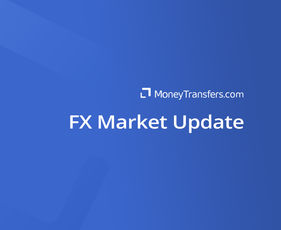The UK is undoubtedly one of the top destinations for expats from all over the world. Huge waves of migrants from Asia, Africa, and a number of countries in Europe go to the UK every year to try to make a better living for their families.
The UK remittance statistics we selected for you today will not only confirm this but also give you detailed insights into these money transfers, such as which country receives the largest amounts of remittances from the UK and which relies on them the most.
Additionally, we will delve into what are the most common reasons Brits remit and what are the most and least expensive ways for migrants to send money to their home countries. Read on to find out all about it.
Top UK Remittance Statistics and Facts
The total inward money transfer flow to the UK in 2021 was $3.523 billion.
The total outward money transfer flow from the UK in 2021 was $10.083 billion.
With an average outflow of $10.291 billion, the UK is the 14th biggest remittance sender in the world.
India received £2.975 billion in remittances from the UK in 2018.
UK remittances have the highest impact on Jamaica’s GDP, comprising 1.74% of it.
52% of Ireland’s remittance inflow in 2018 originated from the UK.
The average cost of remitting from the UK to a different country in 2019 was 7.12%.
Sending cash from the UK had the highest average fee of 9.54% in Q4 of 2019.
26.6% of non-EU-born migrants in the UK say they remit to support their friends and family.
General Remittance Statistics for the UK
With an average outflow of $10.291 billion, the UK is the 14th biggest remittance sender in the world.
As one of the leading global economies, the remittance outflow in the UK is significantly higher than the country’s inflow, though the money remitted from the UK is not even close to the top five. The USA is undoubtedly the biggest remittance sender in the world, with an average of $60.969 billion, followed by Saudi Arabia with $34.230 billion. The money sent out from the UK can be compared to the remittance outflows of Italy, $10.540 billion, and Malaysia, $9.890 billion.
(Merchant Machine)
The total outward remittance flow from the UK in 2021 was $10.083 billion.
Historical data shows that outgoing remittances from the UK have varied between around $9 billion and around $11 billion since 2005. Before that, remittances from the UK were significantly lower. For example, in 1999, only $5.112 billion were sent out of the UK. That figure steadily grew until 2007, when it reached $11.597 billion, the country’s all-time high. This upward trend didn’t continue in the next decade, and a new fluctuating trend was set. In 2020, only $9.382 billion were sent out of the UK, which is the lowest UK remittance outflow in the last 17 years.
(Knomad)
The total inward remittance flow to the UK in 2021 was $3.523 billion.
The remittance inflow to the UK has been on a downward trend since 2007, when $6.316 billion were sent to the UK. Every year afterward, the flow of remittances sent to the UK has been steadily decreasing, with one exception in 2020 when it had a slight surge, moving up to $4.225 billion from $4.193 billion in 2019. The $3.523 billion the UK received in 2021 is the lowest remittance inflow on record since at least 1999 and account for a minuscule percentage of only 0.1% of Britain’s GDP.
(Knomad)
Remittance Flows From the UK by Country
India received £2.975 billion in remittances from the UK in 2018.
Stats show that India is the number one country in the world by remittance inflow, so it makes sense that the largest remittance amount sent out from the UK would go to it. However, even though the remittances sent to India are the biggest by absolute value in the UK, they only account for 0.15% of the country’s GDP and a small portion of 5% of all the remittances that India received that year.
(Migration Observatory)
0.97% of Nigeria’s GDP is comprised of remittances from the UK.
UK money transfer stats show that £2.899 billion were sent from the UK to Nigeria in 2018. UK remittances play an important role in Nigeria’s economy and so much can be concluded from the data. In addition to contributing almost 1% to the country’s GDP, money transfers from the UK account for 15.9% of all the remittances Nigeria received in 2018.
(Migration Observatory)
9% of all remittances sent to Pakistan in 2018 originated in the UK.
A similar value of remittances was sent from the UK to France and Pakistan in 2018. According to the remittance data from that year, 7.8% of the remittance inflow received by France, or £1.588 billion, and 9% of the remittances received by Pakistan, or £1.412 billion, originated in the UK. However, the impact that this money has on these two countries is vastly different. Namely, UK remittances account for only 0.08% of France’s GDP, while they account for 0.60% of Pakistan’s GDP.
(Migration Observatory)
The remittance outflow from the UK to China in 2018 was £1.117 billion.
Even though China is among the top five destinations for outgoing remittances from the UK, remittance statistics show that the money remitted from the UK to China has almost no impact on the country’s economy. Namely, these £1.117 billion only account for 0.1% of China’s GDP and 2.2% of all remittances received by China. In contrast, the £1.106 billion remitted to Poland the same year are much more effective, as they comprise 0.25% of Poland’s GDP and account for 20.9% of all of the country’s remittances.
(Migration Observatory)
UK remittances have the highest impact on Jamaica’s GDP, comprising 1.74% of it.
According to the UK remittance statistics from 2018, the £205 million sent from the UK to Jamaica is not an amount large enough to put Jamaica in the top 20 recipients of UK remittance outflow. Furthermore, remittances from the UK only account for 10.9% of all remittances Jamaica received that year, and yet they comprise 1.74% of Jamaica’s GDP, which goes to show how heavily reliant on remittances this country is.
(Migration Observatory)
The £20 million remittances sent from the UK to the Gambia comprise 1.61% of the country’s GDP.
Money transfer statistics like this one best illustrate how vital remittances are to low and middle-income countries. The £20 million sent from the UK to Gambia are nowhere near the top 20 by absolute amounts, but they are second-most impactful to the country’s economy. Similar examples include Dominica, where £3 million of UK remittances comprise 0.66% of the country’s GDP, St. Vincent and the Grenadines, where £4 million account for 0.62%, and Grenada, where £5 million comprise 0.51% of the country’s GDP.
(Migration Observatory)
52% of Ireland’s remittance inflow in 2018 originated from the UK.
UK remittance data reveals that £243 million sent from the UK to Ireland only accounted for 0.08% of the country’s GDP, but comprised more than half of the entire remittance inflow. Other countries where remittances from the UK comprise a large share of their total remittances include Cyprus, with 44.9% (£151 million), Lithuania, with 32.5% (£338 million), Malta, with 30.6% (£62 million), Latvia, with 29.6% (£272 million), and Kenya, with 27% (£551 million).
(Migration Observatory)
Kenya received £551 million in remittances from the UK in 2018.
The UK outward remittance statistics show that Kenya is among the top 20 recipients of UK remittance outflow in all three categories, by absolute amount, by share of the GDP (0.84%), and by share of the total remittance entering the country (27%). In addition to Kenya, only three other countries in the world can be found on all three top 20 lists:
Nigeria with £2.899 billion (0.97% of GDP and 15.9% of total remittance inflow).
Zimbabwe with 278 million (1.19% of GDP and 21.4% of total remittance inflow).
Lithuania with 338 million (0.84% of GDP and 32.5% of total remittance inflow).
(Migration Observatory)
The Cost of Outgoing Remittance in the UK
The average cost of remitting from the UK to a different country in 2019 was 7.12%.
In simpler terms, sending £120 from the UK to a different country would cost you £8.5, on average. Of course, the remitting fees vary greatly from one country to the next and by the selected money transfer method. The records also show that the cost of remitting money abroad has been slowly declining in the previous decade. For example, in 2009, the average remittance cost in the UK was 9.66%.
(Migration Observatory)
The average cost of sending £120 from the UK to Afghanistan was 12.68% in Q4 2019.
UK money transfer statistics reveal that remitting to Afghanistan was the most expensive, though plenty of other countries paid above-average costs. The average cost of sending £120 to the Gambia was 12.62%, to Lebanon, it was 12.01%, to Eritrea, it was 11.04%, to Zambia, it was 10.16, to Albania, it was 10.04%, etc. The stats also show that the smallest of fees were paid for remitting to a handful of South Asian countries, including India, with 3.78%, Bangladesh, with 3.98%, Pakistan, with 4.28%, Sri Lanka, with 4.66%, and the Philippines, with 4.89%.
(Migration Observatory)
Sending cash from the UK had the highest average fee of 9.54% in Q4 2019.
Statistics showing the increase in remittance costs by payment instruments very clearly indicate that bank account transfers were the most inexpensive option no matter where the money was being sent. Their average cost of bank account transfers for all countries was 5.61%, and this method was followed by credit/debit card transfers, whose average was 6.71%. Cash transfers were the most expensive option regardless of where the money was sent. For example, the average fee for sending cash to India was 5.78%, for a credit/debit card transfer, it was 4.85%, and for a bank account transfer, it was only 2.14%.
(Migration Observatory)
Reasons for the Outward Remittance From the UK
26.6% of non-EU-born migrants in the UK say they remit to support their friends and family.
Migrants who were not born in a country from the EU are the most common remitters of the British remittance outflow. In addition to supporting their close ones, 3.6% of them say they send money to their home country to support the local communities, 1.6% say they remit as a personal investment of savings, and 0.7% send money to repay a loan.
(Migration Observatory)
12.4% of EU-born migrants in the UK remit to support family and friends.
UK remittance statistics show that migrants born in countries that are members of the EU are less likely to remit than non-EU-born UK residents but more likely than those who were born in the UK. Besides supporting their relatives, 1.5% of them say they send money to support local communities in their home countries, and small percentages of only 0.9% and 0.4% say they remit as personal investments of savings or to repay a loan.
(Migration Observatory)
Only 6.1% of migrants born in the UK send money abroad to support their friends and families.
The most recent remittance statistics reveal that Brits whose parents migrated to the UK are not very likely to send money to their family’s home country. While only 6.1% of them send money to support their relatives, just 2% of them remit to support local communities in their parents’ motherlands. Additionally, extremely small portions of only 0.5% and 0.4% say they send money abroad as a personal investment or to repay a loan their family owes in another country.
(Migration Observatory)
The Bottom Line
As you could see from the UK remittance statistics above, outgoing money transfers from the UK impact the home countries of migrants differently. While the largest amount of money transferred out of the UK go to India, they have a small effect on the country’s GDP as Indian people expedite in many different countries, and the country’s remittance inflow is enormous.
On the other hand, UK remittances play a major role in the economies of smaller countries like the Gambia, Dominica, St. Vincent and the Grenadines, and Grenada, even though they are hundreds of times lower than the ones sent to India.
Sources:
Contributors




.svg)










